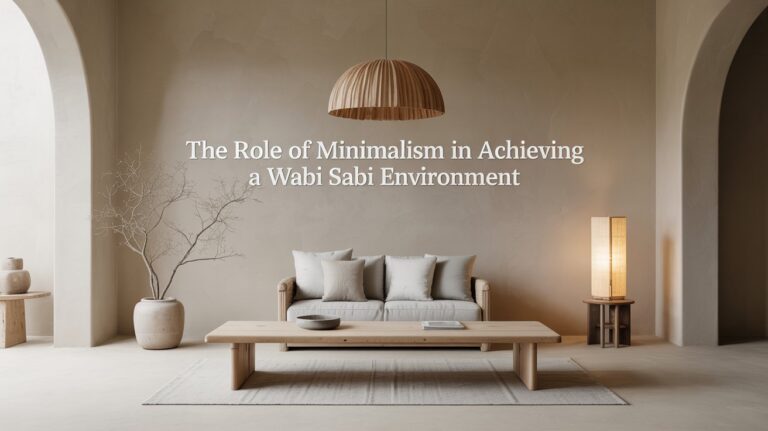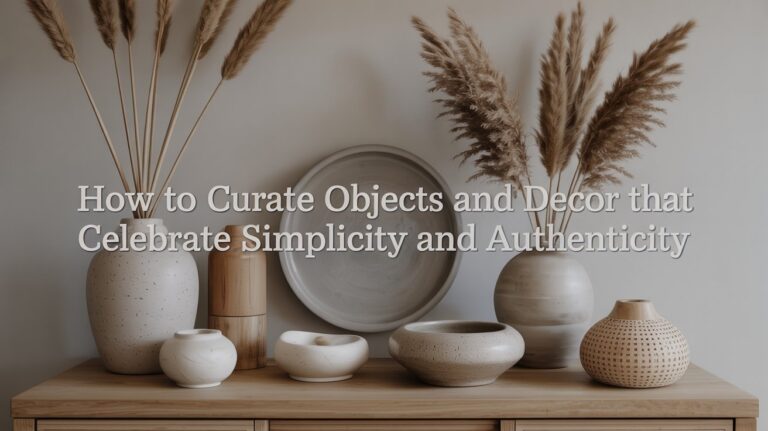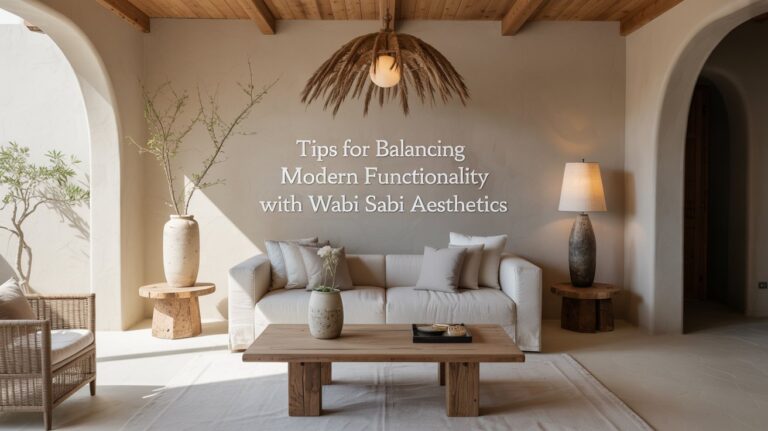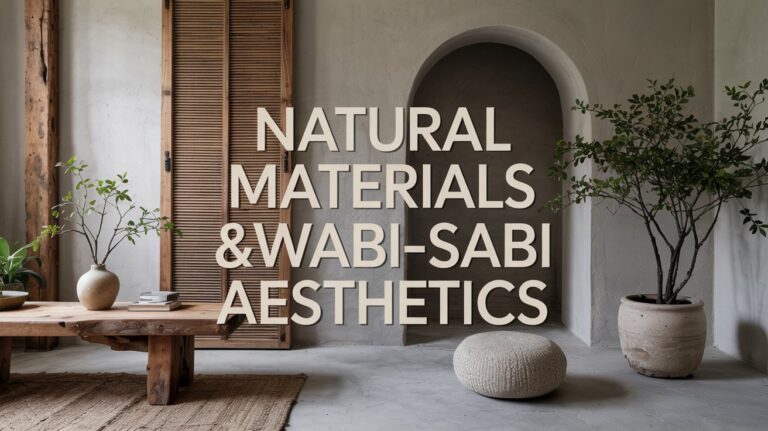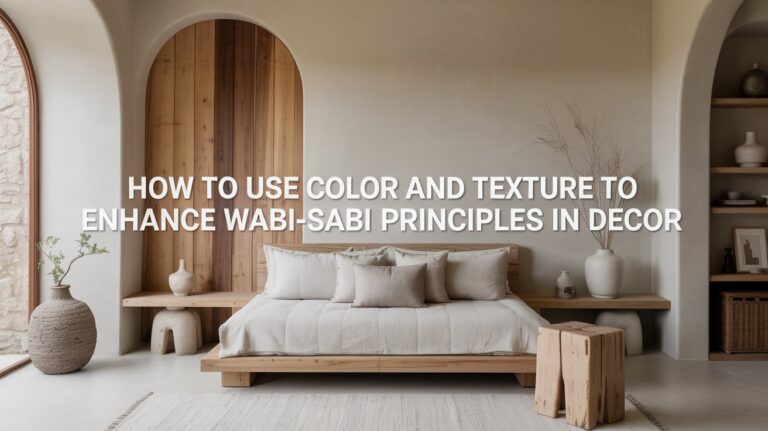How to Integrate Nature Into Your Home for a Wabi Sabi Feel
I have been, or can be if you click on a link and make a purchase, compensated via a cash payment, gift, or something else of value for writing this post. As an Amazon Associate, I earn from qualifying purchases. Please read my full Affiliate Disclosure for more information.
To weave nature into a Wabi-Sabi home, start with raw, weathered textures: rough beams, hand-finished plaster, and untreated stone that patina with time. Favor earthy light and low-contrast tones—clay, stone, muted greens—so daylight reveals subtle shifts. Introduce greenery in small forest-like groupings and add a calm water element or botanicals in simple ceramics. Keep surfaces uncluttered, favor negative space, and carve in simple rituals. If you stay curious, you’ll uncover more ways to soften space with nature.
Key Takeaways
- Use raw, weathered finishes and untreated materials to honor age and imperfections.
- Favor earthy, low-contrast palettes and rely on natural light to reveal texture.
- Integrate greenery and living elements, grouping plants like a small forest for calmness.
- Choose handcrafted decor and simple rituals that emphasize honest surfaces and quiet routines.
- Create minimal, open spaces with negative space, serene views, and a single focal natural element.
Embracing Imperfect Materials and Textures
Textures tell the story of a space, not perfection. You’ll notice how imperfection becomes a guide, not a flaw, when you choose raw materials and weathered finishes. You’re not chasing flawless sameness; you’re honoring time, use, and quiet flaws that add character. Let rough-hewn beams, hand-finished plaster, and untreated stone ground you in the moment. Embrace surfaces that patina with touch and weather. Keep lines simple, textures honest, and colors muted. The goal isn’t polish, it’s presence—an honest room you feel, not just see. In this approach, restraint reveals depth.
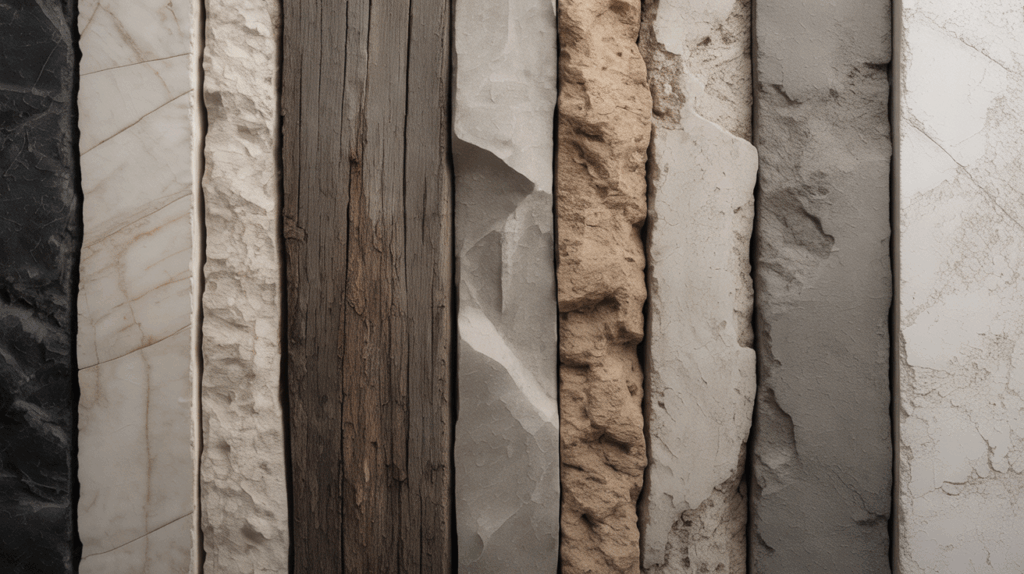
Earthy Palettes and Natural Light
Earthy palettes ground a space in warmth and calm, while natural light sculpts it with quiet rhythm. You choose tones like clay, stone, and muted greens to create a grounding backdrop, letting textures do the talking. Let daylight reveal subtle shifts through the day, emphasizing texture over flash. Use low-contrast schemes that breathe with the room, so every corner feels intentional. Scenic vistas outside become a neutral reference, guiding your color choices and balance. Embrace seasonal changes by adjusting textiles and finishes rather than overpowering them. The result is serene, tactile, and honest, inviting thoughtful, uninterrupted living.
Greenery, Plants, and Living Elements
Greenery and living elements bring the room to life without crowding it. You’ll balance greens with natural textures, letting imperfect forms shine. Choose plants you can care for, not just admire, and group them in sets that resemble a tiny forest. Introduce indoor waterfalls for a gentle, audible reminder of water’s rhythm, not clutter. Use low-maintenance varieties near bright windows, then tuck trailing vines along shelves to soften edges. Feature botanical artwork to echo nature without overpowering space. Keep lines clean, colors earthy, and spaces open. This approach sustains calm, connection, and a quiet, lived-in energy.
Handcrafted Decor and Simple Rituals
From the calm of greenery, you’ll start weaving in handcrafted decor and simple rituals that ground the space. You choose natural fiber textiles and organic shapes, letting textures speak softly. Handmade ceramics bring imperfect charm, their glaze catching light with quiet honesty. Rustic wood furniture anchors the room, showing its age through subtle wear. Keep surfaces uncluttered, letting negative space breathe. Embrace simple rituals: a morning cup, a drying branch, a single scent. These elements temper bold contrasts, creating a measured rhythm. In this approach, handcrafted decor becomes a canvas for everyday mindfulness and nature’s quiet influence.
Space to Breathe: Quiet Corners and Minimalism
Quiet corners invite breath and restraint. You create space by lowering clutter, allowing light and texture to speak. Choose simple forms, natural tones, and honest materials that age with grace. A chair, a small shelf, and a plant become anchors, not distractions. Let negative space carry calm; avoid crowding. Prioritize quiet routines: a morning sit, a window seat, a single scented candle. This is minimalism as refuge, not rule. Seek scenic views from chosen angles, and let outdoor connections inform interior depth. Your home breathes when nature enters softly, shaping intention, rhythm, and a relational, lasting serenity.
Conclusion
In this home, you let imperfection lead. You choose rough textures, honest materials, and muted tones that echo the earth. You invite light to soften corners and reveal subtle shifts in color. You welcome greenery as a quiet heartbeat, not a show. You slow down, trim excess, and make space for simple rituals. In this stillness, clutter fades and calm returns. You live with nature, not against it, creating a wabi sabi rhythm that feels eternally you.

